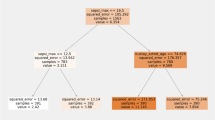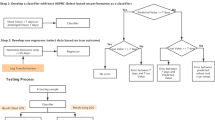Abstract
Length of Stay (LOS) prediction at the time of admission can give clinicians insight into the illness severity of patients and enable them to prevent complications and adverse events. It can also help hospitals to manage their facilities and manpower more efficiently. This paper first applies Borderline-SMOTE and multivariate Gaussian process imputer techniques to overcome data skewness and handle missing values which have been ignored by most studies. Then, based on our conversation with clinicians, patients are stratified into five classes according to their LOS. Finally, five machine learning algorithms, including support vector machine, deep neural networks, random forest, extreme gradient boosting, and decision tree are developed to predict LOS of unselected patients admitted to the emergency department at Odense University Hospital. These models utilize information of patients at the time of admission, including age, gender, heart rate, respiratory rate, oxygen saturation, and systolic blood pressure. Performance of predictive models on the data before and after imputation and class balancing are investigated using the area under the curve metric and the results show that our proposed solutions for data skewness and missing values challenges improve the performance of predictive models by an average of 13%.
Access this chapter
Tax calculation will be finalised at checkout
Purchases are for personal use only
Similar content being viewed by others
References
Awad, A., Bader-El-Den, M., McNicholas, J.: Modeling and predicting patient length of stay: a survey. Int. J. Adv. Sci. Res. Manage. 1(8), 90–102 (2016)
Carter, E.M., Potts, H.W.W.: Predicting length of stay from an electronic patient record system: a primary total knee replacement example. BMC Med. Inform. Dec. Mak. 14(1), 26 (2014)
Roberts, A., Marshall, L., Charlesworth, A.: A decade of austerity. The funding pressures facing the NHS from (2010)
Lim, A., Tongkumchum, P.: Methods for analyzing hospital length of stay with application to inpatients dying in Southern Thailand. Glob. J. Health Sci. 1(1), 27 (2009)
Vincent, J.-L., Singer, M.: Critical care: advances and future perspectives. Lancet 376(9749), 1354–1361 (2010)
Chaou, C.-H., Chen, H.-H., Chang, S.-H., Tang, P., Pan, S.-L., Yen, A.M.-F. et al.: Predicting length of stay among patients discharged from the emergency department—using an accelerated failure time model. PloS One 12(1), e0165756 (2017)
Houthooft, R., Ruyssinck, J., van der Herten, J., Stijven, S., Couckuyt, I., Gadeyne, B., et al.: Predictive modelling of survival and length of stay in critically ill patients using sequential organ failure scores. Artif. Intell. Med. 63(3), 191–207 (2015)
Kudyba, S., Gregorio, T.: Identifying factors that impact patient length of stay metrics for healthcare providers with advanced analytics. Health Informat. J. 16(4), 235–45 (2010)
Cheng, T.-H., Hu, P.J.-H.: A data-driven approach to manage the length of stay for appendectomy patients. IEEE Trans. Syst. Man Cybern. Part A Syst. Hum. 39(6), 1339–47 (2009)
Hachesu, P.R., Ahmadi, M., Alizadeh, S., Sadoughi, F.: Use of data mining techniques to determine and predict length of stay of cardiac patients. Healthcare Informat. Res. 19(2), 121–129 (2013)
Combes, C., Kadri, F., Chaabane, S.: Predicting hospital length of stay using regression models: application to emergency department (2014)
Rahman, M.A., Honan, B., Glanville, T., Hough, P., Walker, K.: Using data mining to predict emergency department length of stay greater than 4 hours: derivation and single-site validation of a decision tree algorithm. Emerg. Med. Aus. 32(3), 416–421 (2020)
Barnes, S., Hamrock, E., Toerper, M., Siddiqui, S., Levin, S.: Real-time prediction of inpatient length of stay for discharge prioritization. J. Am. Med. Inform. Ass. 23(e1), e2-10 (2016)
Schmidt, T., Wiil, U.K.: Designing a 3-Stage Patient Deterioration Warning System for Emergency Departments
Naemi, A., Mansourvar, M., Schmidt, T., Wiil, U.K.: Prediction of patients severity at emergency department using NARX and ensemble learning. In: 2020 IEEE International Conference on Bioinformatics and Biomedicine (BIBM), pp. 2793–9 (2020). IEEE
Hu, Z., Melton, G.B., Arsoniadis, E.G., Wang, Y., Kwaan, M.R., Simon, G.J.: Strategies for handling missing clinical data for automated surgical site infection detection from the electronic health record. J. Biomed. Inform. 68, 112–120 (2017)
Bonaccorso, G.: Machine Learning Algorithms. Packt Publishing Ltd. (2017)
Turgeman, L., May, J.H., Sciulli, R.: Insights from a machine learning model for predicting the hospital Length of Stay (LOS) at the time of admission. Expert Syst. Appl. 78, 376–385 (2017)
Awad, A., Bader-El-Den, M., McNicholas, J., Briggs, J.: Early hospital mortality prediction of intensive care unit patients using an ensemble learning approach. Int. J. Med. Inform. 108, 185–195 (2017)
Chawla, N.V., Bowyer, K.W., Hall, L.O., Kegelmeyer, W.P.: SMOTE: synthetic minority over-sampling technique. J. Artif. Intell. Res. 16, 321–357 (2002)
Kovács, G.: An empirical comparison and evaluation of minority oversampling techniques on a large number of imbalanced datasets. Appl. Soft Comput. 83, 105662 (2019)
Han, H., Wang, W.-Y., Mao, B.-H.: Borderline-SMOTE: a new over-sampling method in imbalanced data sets learning. In: International conference on Intelligent Computing, pp. 878–87 (2005). Springer
Alhassan, Z., Budgen, D., Alshammari, R., Daghstani, T., McGough, A.S., Al Moubayed, N.: Stacked denoising autoencoders for mortality risk prediction using imbalanced clinical data. In: 2018 17th IEEE International Conference on Machine Learning and Applications (ICMLA), pp. 541–6 (2018). IEEE
Sagi, O., Rokach, L.: Ensemble learning: a survey. Wiley Interdisc. Rev. Data Min. Knowl. Discovery. 8(4), e1249 (2018)
Safari, S., Baratloo, A., Elfil, M., Negida, A.: Evidence based emergency medicine; part 5 receiver operating curve and area under the curve. Emergency 4(2), 111 (2016)
Author information
Authors and Affiliations
Corresponding author
Editor information
Editors and Affiliations
Rights and permissions
Copyright information
© 2021 The Author(s), under exclusive license to Springer Nature Singapore Pte Ltd.
About this paper
Cite this paper
Naemi, A., Schmidt, T., Mansourvar, M., Ebrahimi, A., Wiil, U.K. (2021). Prediction of Length of Stay Using Vital Signs at the Admission Time in Emergency Departments. In: Chen, YW., Tanaka, S., Howlett, R.J., Jain, L.C. (eds) Innovation in Medicine and Healthcare. Smart Innovation, Systems and Technologies, vol 242. Springer, Singapore. https://doi.org/10.1007/978-981-16-3013-2_12
Download citation
DOI: https://doi.org/10.1007/978-981-16-3013-2_12
Published:
Publisher Name: Springer, Singapore
Print ISBN: 978-981-16-3012-5
Online ISBN: 978-981-16-3013-2
eBook Packages: Intelligent Technologies and RoboticsIntelligent Technologies and Robotics (R0)




